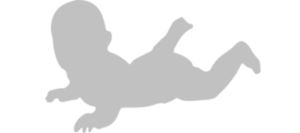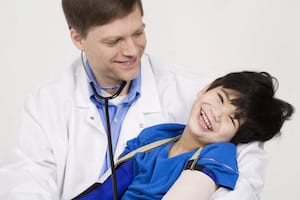Signs and symptoms of birth injuries
 Some childbirth injury symptoms are immediately recognizable, while others can take months or years to become noticeable.
Some childbirth injury symptoms are immediately recognizable, while others can take months or years to become noticeable.
Parents and caregivers often have the most knowledge about their children’s overall health and development. Therefore, parents are a very important resource in determining if their child sustained a birth injury.
For this reason, it is important for parents and caregivers to monitor their child’s development from birth through toddlerhood and take careful note of any abnormalities or delays.
Signs to look for immediately after birth
There are a few signs of a birth injury that present themselves directly after the child is born. While not all of the following symptoms may mean that a birth injury has occurred, they can serve as an important sign that some form of damage may have taken place during delivery.

Symptoms to look for immediately following birth include:
- Arched back while crying
- Difficulty suckling, eating, or swallowing
- Excessive drooling
- Facial nerve injury
- Hand curled into a claw-like shape
- High-pitched crying, grunting, or overall fussiness
- Low oxygen levels
- Low heart rate
- Muscle stiffness or looseness
- Seizures
- Sensitivity to light
- Skull fractures
- Weak or absent reflexes
If your child exhibits any of the above symptoms immediately after birth, this may be a warning sign of a birth injury related to brain or nerve damage, such as cerebral palsy.
It is important to get medical help for any symptoms you see in your child as soon as they come to your attention. This will provide your child with the best chance of receiving the care they need early on.
Signs to look for at 12-24 months old
 Some birth injury symptoms may take 1 to 2 years to fully develop and become apparent. Childbirth injury symptoms generally become obvious when children are missing milestones or showing physical signs of brain and/or nerve damage.
Some birth injury symptoms may take 1 to 2 years to fully develop and become apparent. Childbirth injury symptoms generally become obvious when children are missing milestones or showing physical signs of brain and/or nerve damage.
Symptoms to look for between 12-24 months of age include:
- Delays in speech or no speech development at all
- Difficulties eating, drinking, grasping utensils, or using cups
- Difficulties walking or crawling
- Intellectual disabilities, such as low memory retention
- Involuntary pulling of the neck
- Lack of muscle control or muscle spasms (spasticity)
- Lack of bodily movements (ataxia)
- Not bringing objects to mouth
- Not turning their head when hearing loud noises
- Poor coordination
- Unable to pass small objects from one hand to the other
- Unable to sit, stand, walk, or crawl without assistance
- Vision and/or hearing problems
If your child is showing any of the symptoms above, they may have sustained an injury at birth. Contact your doctor to get a diagnosis and treatment plan to help your child manage their symptoms.
Signs to look for after 2 years old
 Not all types of birth injuries will be recognizable within the first two years. Birth injury symptoms may often appear when a child enters preschool or elementary school and begins to show physical and/or mental delays when compared to their peers.
Not all types of birth injuries will be recognizable within the first two years. Birth injury symptoms may often appear when a child enters preschool or elementary school and begins to show physical and/or mental delays when compared to their peers.
Symptoms to look for after 2 years of age include:
- Blindness, deafness, or muteness
- Difficulties dressing, eating, or drinking without help
- Difficulties walking up and down stairs or running
- Muscle stiffness or looseness
- Onset of developmental disabilities, such as autism or epilepsy
- Problems with fine motor skills due to jerky reflexes
- Tremors or shakiness
- Unable to draw straight lines or circles
- Unable to speak or understand full sentences
If your child is showing birth injury symptoms, you may be eligible to pursue financial compensation. Many birth injuries are preventable and caused by medical negligence on behalf of medical professionals. Learn if you are qualified with a free case review.
What causes birth injuries & their symptoms?
Brain damage can be caused by physical injury to the child while they are exiting the birth canal. This may be caused by oxygen deprivation (hypoxia), suffocation (asphyxia), misuse of forceps or vacuum extractors, and more.
Birth trauma can result in irreversible damage to the brain. If your child is experiencing birth injury symptoms, it may show that there was damage to the brain during the birthing process. Symptoms may indicate damage to the basal ganglia, cerebellum, or motor cortex.
Damage to these areas of the brain can result in different symptoms:
 Basal Ganglia:
Basal Ganglia:Causes involuntary movement, tremors, and difficulty with overall mobility and balance
 Cerebellum
CerebellumCauses impairments with balance, coordination, fine motor skills, posture, and loss of bodily movements
 Motor cortex
Motor cortexCauses stiff muscles, weakness on one side of the body, and loss of fine motor skills
Damage to these various areas of the brain can also cause cognitive issues. For example, individuals who have damage to the basal ganglia may show signs of obsessive-compulsive disorder.
Many cases of birth injuries caused by brain damage could have been prevented during childbirth. If you believe your child has a birth injury caused by medical negligence, you may be eligible for financial compensation.
Developmental delays from birth injuries
Birth injuries caused by brain damage can lead to children missing important developmental milestones. Developmental delays are often the first birth injury symptom that parents notice.
Your child may show signs of a developmental delay if they are not:
- Crawling
- Holding their head on their own
- Rolling over
- Sitting
- Smiling
- Standing
- Talking
- Using their hands
- Walking
It is important to consult with your doctor if your child is failing to meet these important milestones. Developmental delays are not always caused by brain damage from a birth injury, so it is important to get an accurate diagnosis.
What should I do if I think my child has a birth injury?
 It is important to contact a doctor if you believe your child is showing any childbirth injury symptoms and/or developmental delays.
It is important to contact a doctor if you believe your child is showing any childbirth injury symptoms and/or developmental delays.
Doctors may diagnose a birth injury case through a physical exam as well as imaging, hearing, vision, and intellectual tests.
Getting a prompt and accurate diagnosis can help your child get the treatment they need to manage their symptoms and live a healthy, independent life. Treatment options may include medication, therapy, surgery, and more depending on your child’s condition and severity of symptoms.
Many families may struggle to pay for costly birth injury treatment. Thankfully, there are ways families can access financial compensation to cover their child’s treatment costs, such as a birth injury lawsuit.
Learn more about the symptoms of birth injuries
Many parents and caregivers may feel overwhelmed, confused, and lost when their child is showing signs of a birth injury.
It is important to remember there are many treatment and support options available to help your child get the care they need to lead a happy life.
Speak with one of our experienced registered nurses to answer any questions about your birth injury symptoms, diagnosis, treatment, and more.




